Cork oak (Quercus suber) is an evergreen tree native to the western Mediterranean region. It thrives in countries like Portugal, Spain, and Morocco. This tree is well known for its thick, corky bark, which is harvested without harming the tree. The bark is typically removed every nine to twelve years, making cork oak one of the few trees that can provide a renewable resource. Cork has many uses, from wine stoppers to flooring, insulation, and more.
These trees can live for over 200 years, with some even reaching 300 years of age. They grow up to 65 feet (20 meters) tall and have a broad, rounded crown. The leaves are leathery and dark green on top, with a lighter, downy underside. The tree’s deep root system allows it to access water and nutrients in dry conditions, making it highly drought-resistant.
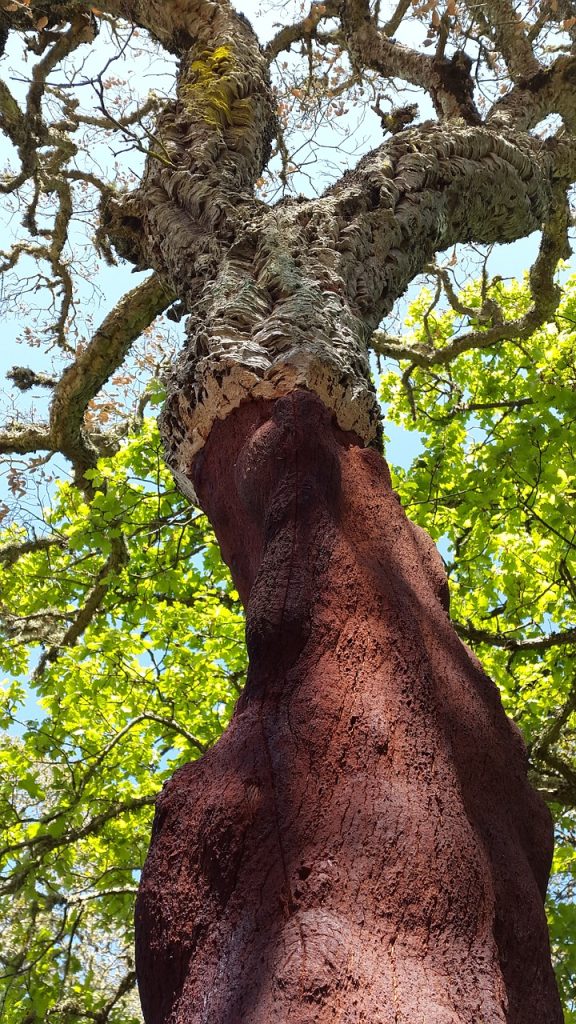
Cork oak forests are incredibly important for biodiversity. They provide habitat for many species, including the endangered Iberian lynx and the Spanish imperial eagle. These forests also play a crucial role in preventing soil erosion and regulating water cycles in Mediterranean landscapes. Additionally, cork oak woodlands are vital for carbon sequestration, helping to mitigate climate change.
Cultivation of cork oak requires well-drained, sandy, or loamy soil. The tree prefers full sun but can tolerate some shade. It’s resistant to wildfires, with its thick bark protecting it from heat. After a fire, the tree can regenerate, and the cork bark helps prevent the tree from burning.
This tree has a rich cultural history, particularly in Portugal, where cork production is a major industry. The tree has been protected by law since the 13th century. Today, cork is still an eco-friendly and sustainable material, and its cultivation supports traditional livelihoods while maintaining healthy ecosystems.
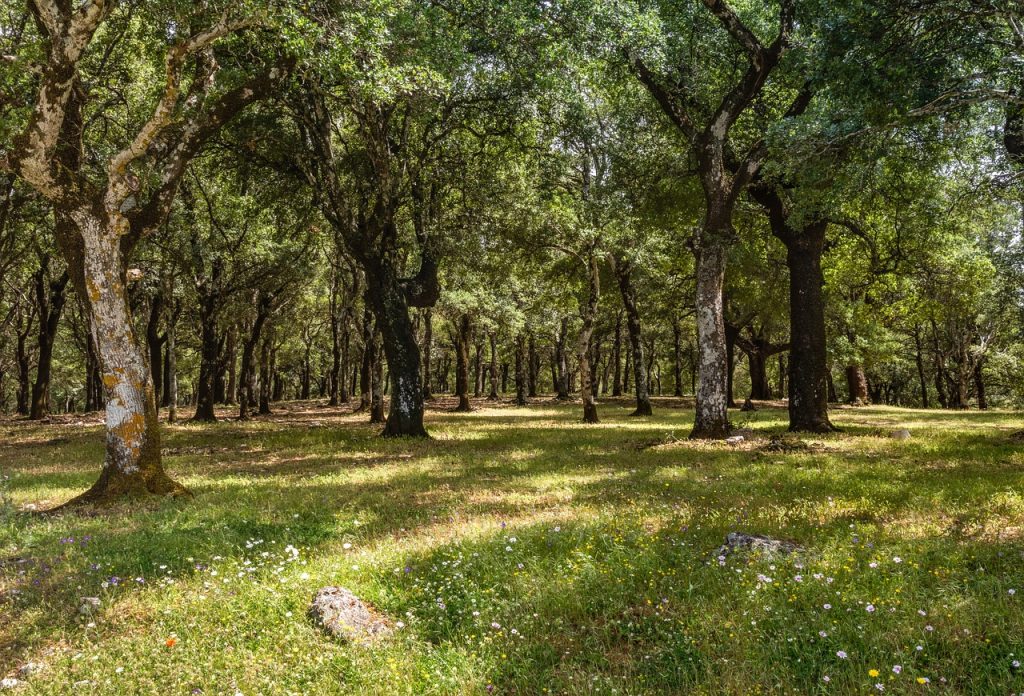
Scientific Classification of Cork Oak
| Kingdom | Plantae |
| Clade | Angiosperms |
| Clade | Eudicots |
| Clade | Rosids |
| Order | Fagales |
| Family | Fagaceae |
| Genus | Quercus |
| Scientific Name | Quercus suber |
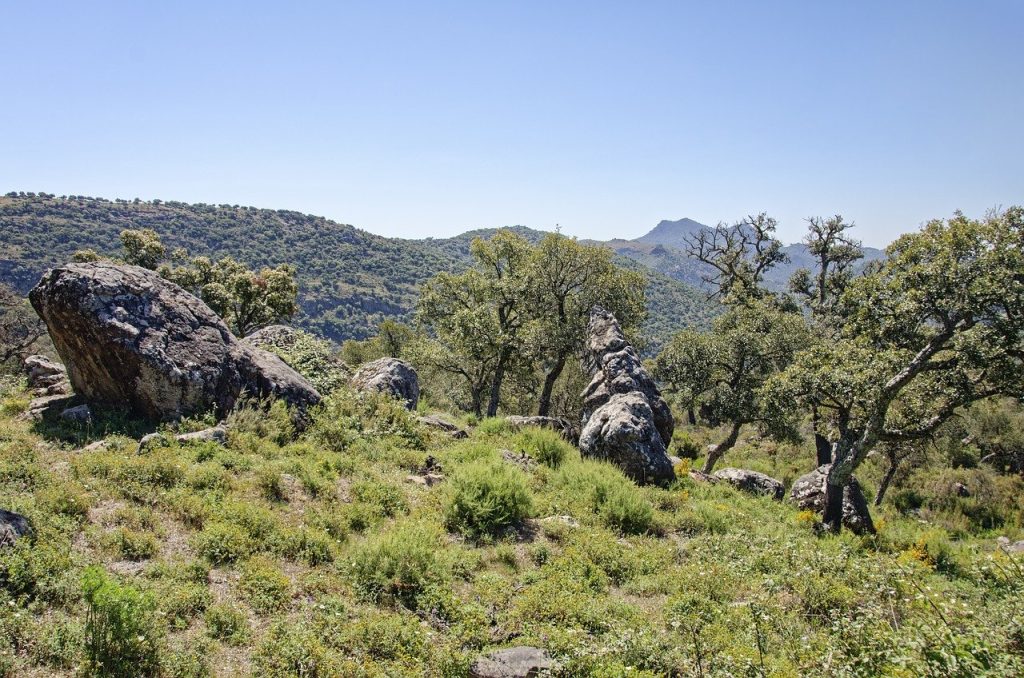
Quick Information
| Plant Type | Evergreen tree |
| Identification | Height: Typically grows up to 20 meters (65 feet) tall Leaves: Leathery, dark green on top, lighter underside, 4-10 cm long Stem: Thick, corky bark, deeply furrowed, grayish-brown Flowers: Small, inconspicuous; male flowers in catkins, female flowers in clusters Roots: Deep and spreading root system Growth Habit: Broad, rounded crown Crown: Dense and wide |
| Distribution | Native to the western Mediterranean region, including Portugal, Spain, and Morocco |
| Habitat | Grows in well-drained, sandy or loamy soils; common in dry, rocky hillsides and coastal areas |
| USDA Hardiness Zone | 9 through 11 |
| Growth Rate | Slow to moderate; grows about 30-60 cm (12-24 inches) per year |
| Lifespan | Long-lived, often over 200 years, with some trees reaching 300 years or more |
| Growing Conditions | Sunlight: Full sun, but can tolerate partial shade Soil: Well-drained, sandy or loamy soil Water: Drought-tolerant, requires minimal watering once established |
| Drought Tolerance | High |
| Diseases | Generally resistant to diseases but can be affected by fungal infections like Ceratocystis and pests such as the Cydia moth |
| Pests | Few pests, but can encounter insects like the cork oak borer or defoliators |
| Reproductive System | Dioecious; separate male and female flowers on different trees |
| Propagation | Through seeds or grafting |
| Wildlife Value | Provides habitat for various species; acorns are a food source for wildlife such as deer and birds |
| Uses | Cork production (wine stoppers, flooring, insulation); wood used for furniture and crafts; ecological role in preventing soil erosion and habitat preservation |
| IUCN Conservation Status | Not evaluated; however, cork oak forests are managed and protected due to their ecological and economic importance |
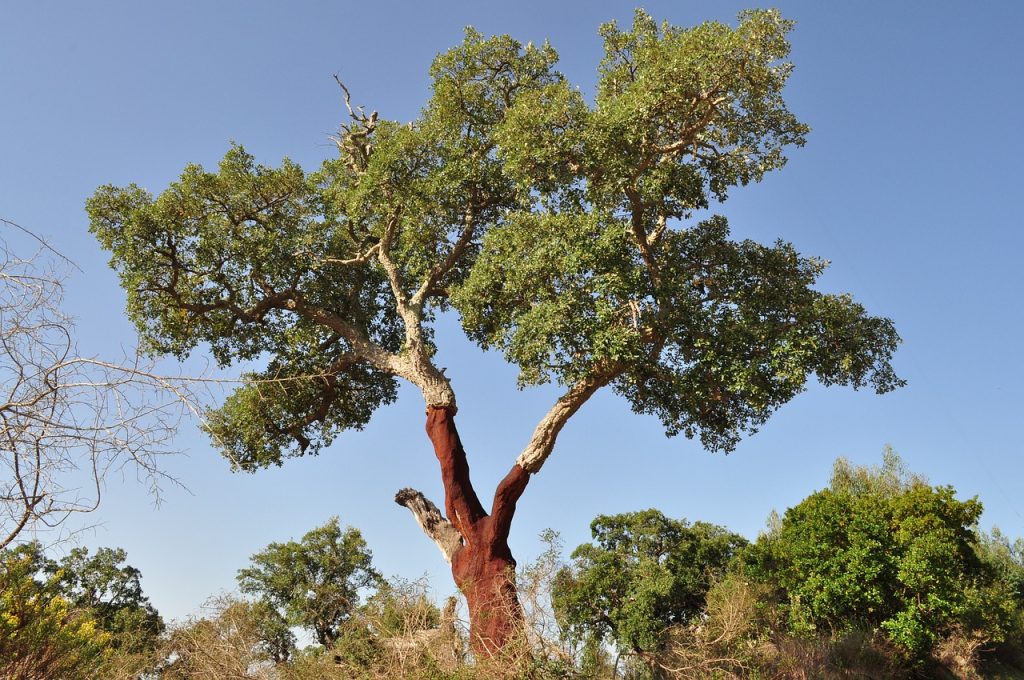
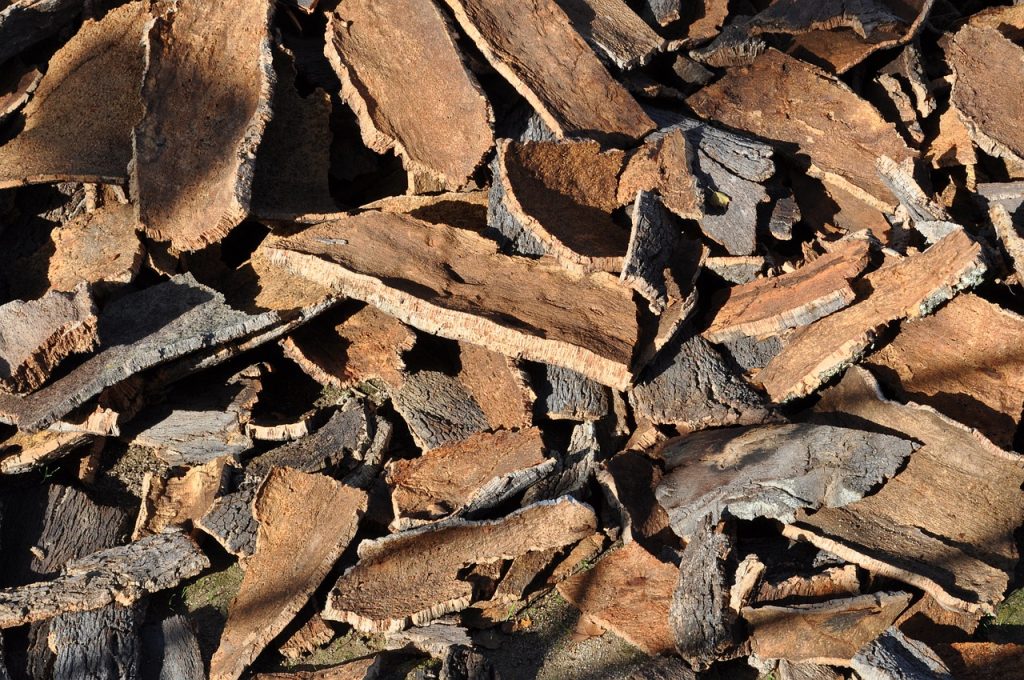
Interesting Facts
Cork oak forests have been managed for cork production for over 3,000 years. The practice dates back to ancient civilizations, including the Egyptians and Greeks, who used cork for various purposes.
These trees are highly resistant to fire due to their thick, insulating bark. This adaptation helps them survive in regions prone to wildfires, and the tree can regenerate even after severe burns.
Cork oak forests contribute significantly to carbon sequestration. Their bark stores large amounts of carbon, helping to mitigate climate change by reducing atmospheric CO2 levels.
The cork bark is unique to this species. It is lightweight, impermeable to liquids, and has excellent insulating properties, which make it valuable for various uses beyond just wine stoppers, such as flooring and insulation materials.
In Portugal and Spain, cork oak forests hold cultural and economic importance. The cork industry supports thousands of jobs and is integral to the local economies in these regions.
